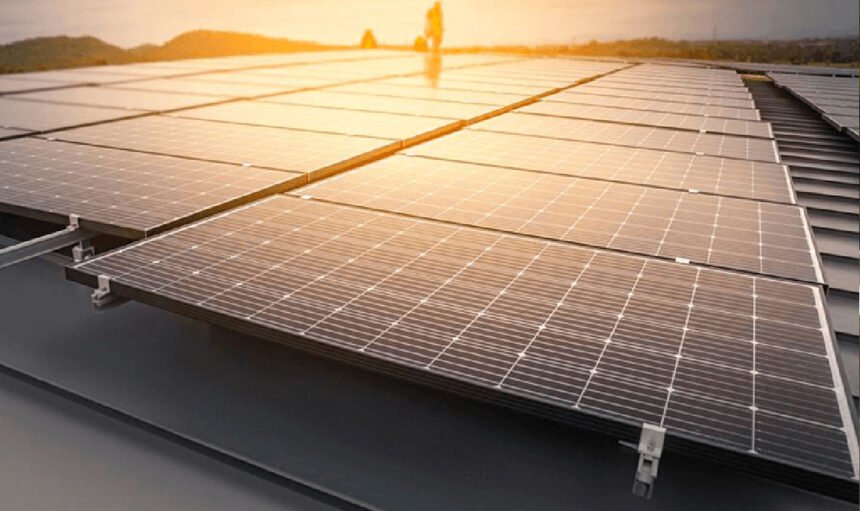According to the Solar Energy Industries Association (SEIA), the total number of solar installations in the U.S. reached an impressive 5 million as of May 2024. Of these installations, 94% are residential! The organization further projects this to double by 2030.
More Americans have switched to solar energy because it’s eco-conscious, money-saving, and has become more affordable. Thanks to advancements in technologies and manufacturing processes, you can now get even more efficient solar panels. The more efficient your panels are, the more renewable energy savings you can enjoy with your solar installation and the lower your utility bills can get.
Business Energy Comparison is another prominent solution to reduce your utility bills by analyzing prices and finding the most affordable one in your locality.
To that end, our team put together this guide with insights on solar panel efficiency. Read on to discover the most efficient solar panels and the innovations that make them the best.
Monocrystalline: The Most Efficient Solar Panels
The most efficient solar panels available today are monocrystalline or “mono” panels. According to the U.S. Department of Energy, they’ve shown efficiency rates of up to 27% in laboratory conditions. In real-world applications, they’ve displayed around 20% to 22% efficiencies, with the highest record being 24.7%.
Why Does Solar Panel Efficiency Even Matter?
Solar panel efficiency is the rate at which a panel converts sunlight into usable electricity. It measures how well a panel performs.
Here’s why it matters.
More Energy Per Area
Solar panel efficiency matters because it directly influences the amount of electricity a panel can produce per square foot of space. So, a higher-efficiency panel will generate more energy from the same amount of sunlight than a lower-efficiency one.
Therefore, higher-efficiency panels can prove valuable in places with limited space, such as home rooftops.
For the same reason, solar power makes the most sense when evaluating different renewable resources for residential use. Solar panels are easy to integrate with roofs. Conversely, other types of renewable energy require far more space or complex infrastructures (like wind turbines or geothermal plants).
Faster ROI
Another reason panel efficiency matters is that it affects your return on investment (ROI). Remember, higher-efficiency panels generate more energy. As a result, they can save you much more and provide faster ROI.
Optimization of System Design
Your panels’ efficiency gives you more freedom to optimize the layout and size of your solar power system based on:
- Your roof’s characteristics (e.g., orientation, condition, and size)
- Any other available space you have that gets direct sunlight
- Your location’s peak sun hours (when the sun’s intensity reaches at least 1,000 W/m²)
For example, suppose you have an older roof that can only support 10 solar panels, but you have available ground space that receives lots of sunlight. Let’s also say you’re in Arizona, which gets an average of 7 to 8 peak sun hours, according to Renogy.com.
In this scenario, you can optimize your system by having your chosen solar company install 10 higher-efficiency panels and a few more on the ground. With this, you can make the most out of your area’s peak sun hours, letting you meet your home’s energy demands and offset the electricity you draw (and pay for) from the grid.
What Makes Mono Panels the Most Efficient?
Aside from monocrystalline panels, the two other primary types of solar panels are polycrystalline (poly) and thin-film. Learning more about their construction and materials can help you better understand why monocrystalline offers the highest efficiency.
Monocrystalline Panels
Monocrystalline solar panels comprise “cells” made of pure silicon crystal cuts, also called “wafers.” Manufacturers assemble these wafers in rows and columns within each panel, with most residential panels featuring 60 cells.
Each monocrystalline cell’s single, uniform silicon crystal structure facilitates smoother electron flow. Thanks to the more efficient electron movement, mono panels can generate more electricity from the same amount of sunlight, making them more efficient than poly and thin-film panels.
Improvements in technology have also boosted mono panel efficiency ratings further. For instance, many of today’s mono panels use Passivated Emitter and Rear Contact (PERC) technology. The panels feature an extra layer on the back to reflect photons that pass back into each cell, letting them produce even more energy.
Another perk of monocrystalline panels is their black color. Homeowners may find it more aesthetic and elegant. Moreover, as a neutral color, black pairs well with other hues without clashing, making it easy to integrate with a home’s existing exterior color scheme.
Given all those benefits, expect mono panels to be more expensive than other solar panels. However, remember that their higher efficiency can offset your initial cost faster than poly or thin-film panels.
Polycrystalline Panels
Solar panel manufacturers also make polycrystalline panels with silicon. However, they don’t use a single crystal; they melt many silicon fragments. They then cut these into wafers before arranging them in each panel.
Polycrystalline solar panels are typically less efficient than their mono counterparts because each poly cell holds more crystals. So, electrons have less room to move, translating to lower energy production.
Because they’re less efficient, poly panels cost less than their mono counterparts. As for their appearance, they typically have a blue hue and may have a variegated, speckled pattern.
Thin-Film Panels
Unlike mono and poly panels made of crystalline cells, thin-film panels use various photovoltaic (PV) materials, such as:
- Non-crystalline, amorphous silicon (denoted as a-Si)
- Cadmium telluride
- Copper indium gallium selenide
- Organic PV cells
Thin-film panels are the least efficient because, as their name suggests, they are much thinner than mono and poly panels. Because of their thinness, they absorb less sunlight, which results in lower energy conversion efficiency.
Thin-film panels are the cheapest of the three, considering their low efficiency. However, their thinness improves their flexibility and malleability, making them ideal for curved or uneven surfaces.
Save More With the Most Efficient Solar Panels
If you’ve been looking for the most efficient solar panels, go with monocrystalline. Yes, they cost the most, but they generate the most electricity, so they’re often the best option, especially for homeowners with limited space. Plus, because they have the highest efficiency ratings, they can offer the most savings, allowing you to enjoy your ROI faster.
For More Information Visit Timelymagazine








